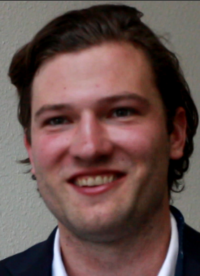Tuesday, August 27, 2019
Interview with Thomas Russell, ETC Solar, Improving Solar Cell Efficiency

For this morning's interview with an entrepreneur, we spoke with Thomas Russell, the Ceo and co-founder of ETC Solar (www.etc-solar.com), a Los Angeles startup developing technology to improve the efficiency and cost of solar cells. We spoke with Thomas on how the company's technology was spun out of Caltech, and why the startup believes the solar cell industry needs its technology.
What does ETC Solar do?

Thomas Russell: ETC Solar develops effectively transparent contacts for solar cell manufacturers, to improve their power output by five percent and to dramatically reduce manufacturing costs.
Where did the technology from ETC Solar come from?
Thomas Russell: We're a spinout of Caltech, out of the labs of Professor Harry Atwater.
How long have you been working on this technology?
Thomas Russell: The research originated from Department of Energy (DOE) and National Science Foundation (NSF) grants in 2015. We worked for two years to demonstrate a proof of concept of the technology. Afterwards, we heavily engaged with the solar cell community to identify product-market-fit. At the beginning of 2018, ETC Solar spun out of Caltech with the mission and the goal to bring these optimized contacts for large scale deployment within the solar cell industry.
Why is this technology important for solar cell manufacturers?
Thomas Russell: The largest contributor to performance loss in solar cells are actually the flat metal contacts which are on top of the cell to extract the power. Typically, five to six percent of the surface of a solar cell is covered with metal. The problem is that that means five to six percent of the sunlight is reflected off that metal, and is never converted into useful electricity. What we did, is we converted these metal contacts, and made them triangular shape, the shape of a Tobelerone chocolate bar. What happens, is the light hits that triangular contact and is absorbed by the solar cell and rather than being reflected back into the sun. So, effectively, we improve the efficiency of a solar cell by five to six percent because five to six percent more sunlight is capable of reaching the actual solar cell.
How far along are you in bringing this to market?
Thomas Russell: We're an early stage company, and we have R&D tools and R&D products currently available. We're finalizing our first two sales contracts with two of the big players in the solar cell field for a first demonstration, and which gets revenue in. We expect our products to be ready in mid-2020, and are targeting the flat solar cell market.
What's your background, and how did you get into this?
Thomas Russell: I'm originally from Amsterdam, and got my masters in Physics. While I was working at Caltech we invented this technology. I then took a little bit of time and became a business consultant, and came back to Caltech to commercialize the technology, together with a former colleague who was a postdoc at Caltech, along with Dr. Harry Atwater.
What is the most difficult technical challenge for your startup?
Thomas Russell: The most difficult technical challenge is definitely operating within the solar cell space, where everything has to be working perfectly to gain that efficiency. That also is a strength for us, because it's very hard to reverse engineer, and you have a very strong IP portfolio. However, getting all the development work done, and getting it to the right scale, and demonstrating the efficiency improvements to the customer is the most difficult part.
What's the biggest lesson you've learned as an entrepreneur so far?
Thomas Russell: You have to constantly be ready to change plans, and pivot, and listen to advisors and what the market is telling you. Listen to academia, and make sure you're constantly optimizing your business model for the technology and the markets. Don't think “I've got my information” and go back to work and two years later have a product where you've been ignoring the latest in the market, the latest challenges, and the many improvements in the market. You have to make sure you and your team are still aligned with what the market wants.
Was it tough to decide to go the entrepreneurial route, rather than in a more typical academic direction?
Thomas Russell: It was based on two things. One, I always wanted to have a big impact on sustainability, and I thought this was a great way to bring a technology to market and have a direct impact on the market. The second was the environment where I was created this opportunity, we went through an NSF I-Corps program with a business director who taught us the lessons and helped us do customer interviews, identify product-market-fit, and how to go through accelerators. And I like the challenge.
What's the next step for your company?
Thomas Russell: The next step is finalizing our seed round, of $1.1M to $1.4M, hiring two more people to get the right team into place to scale the company and to enter the market.
Thanks!